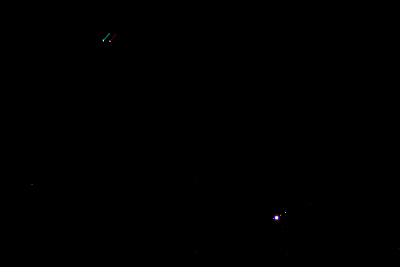Update: I have corrected the links to the larger format images.
Thursday night it was really clear out and I had been wanting to see how far I can push my night/astro- photography. I have to say I'm pretty impressed with what it can do with just a 300mm lens and short exposures. Being zoomed in, I was only able to stretch the exposure to about a second and a half before the stars would streak too much. That meant a high, high ISO
First up, the Andromeda Galaxy. It's the closest spiral galaxy to our own Milky Way, and I was blown away with it when I first managed to point my binoculars in the right direction. This one I can't wait to see once I'm able to really stretch out the exposures instead of brute forcing it with ISO 25600...

M31 - The Andromeda Galaxy
I was also able to capture a planetary nebula in the constellation Lyra. This constellation has been stuck in my head ever since I first spotted it soon after my brother got his cat of the same name. The nebula is a small green disk in the center of the photo.

M57 - The Ring Nebula in the constellation Lyra.
Near 10pm Jupiter made it's way above the trees and I was able to train my sights on our solar system's largest planet and four of its moons: Io, Europa, Ganymede, and Callisto. I was amazed that I was able to actually see each moon showing up as a different color. This is another one that I can't wait to get closer on. With my current setup, Jupiter only consists of about 100 pixels on camera sensor.

Jupiter and it's Moons
(Left to Right: Ganymede, Europa, Jupiter, Io, and Callisto)
 It may not look like much, but the fuzzy little star in the center of the picture is actually a comet. Comet Garradd is making it's way towards the constellation Hercules, where it will then start its swing around the Sun and back in to the cosmos come February. Hopefully it will brighten a magnitude or two as it approaches the Sun, but it certainly won't be the same sight as a Halley's or Hale-Bopp.
It may not look like much, but the fuzzy little star in the center of the picture is actually a comet. Comet Garradd is making it's way towards the constellation Hercules, where it will then start its swing around the Sun and back in to the cosmos come February. Hopefully it will brighten a magnitude or two as it approaches the Sun, but it certainly won't be the same sight as a Halley's or Hale-Bopp.






